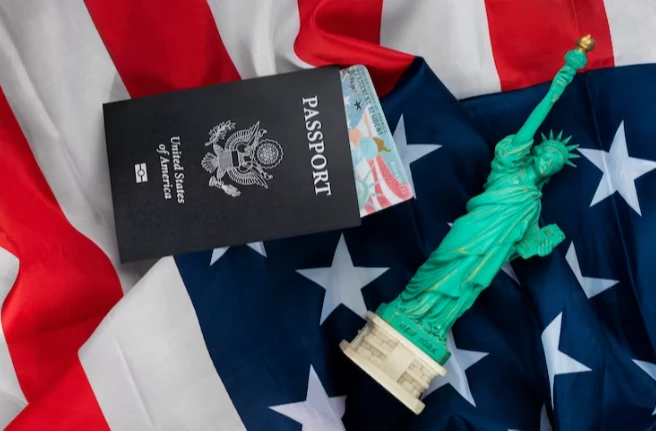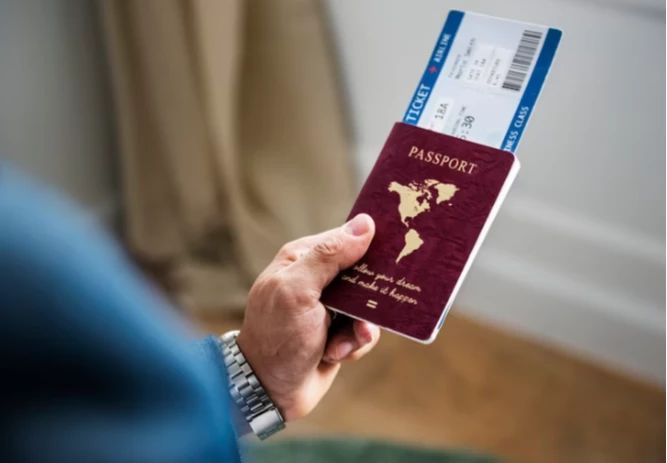"Understanding the Green Card Process: Your Pathway to Permanent Residency United States''
The Green Card process, also known as the Permanent Residency process, is the pathway for foreign nationals to obtain lawful permanent residency in the United States. It is an important topic to understand for those who are interested in living and working in the United States permanently, as it is a key step towards achieving that goal. Understanding the Green Card process can help individuals determine their eligibility, navigate the application process, and ultimately achieve their goal of obtaining permanent residency in the United States.The terms Green Card and Permanent Residency are often used interchangeably to refer to the same thing - the right to live and work in the United States permanently as a foreign national. A Green Card is a physical card that serves as proof of an individual's lawful permanent residency status, while Permanent Residency refers to the legal status itself. A Green Card holder is allowed to work and live in the United States indefinitely, travel outside the country and return, and apply for citizenship after a certain period of time. It is important to note that holding a Green Card does not guarantee citizenship, but it is a significant step towards achieving that goal.
Eligibility for a Green Card:
There are several categories of individuals who may be eligible to apply for a Green Card. These include:
1. Family Members of U.S. Citizens and Lawful Permanent Residents: Immediate relatives of U.S. citizens (spouses, unmarried children under 21, and parents) may be eligible for a Green Card without any numerical limitations. Other family members of U.S. citizens and lawful permanent residents may also be eligible, but may be subject to quotas and waiting periods.
2. Employment-based Green Cards: Individuals who are sponsored by a U.S. employer may be eligible for a Green Card based on their job skills or investment in a U.S. business. There are several categories of employment-based Green Cards, including EB-1 (for individuals with extraordinary ability in the arts, sciences, education, business, or athletics), EB-2 (for individuals with advanced degrees or exceptional ability in the sciences, arts, or business), EB-3 (for professionals, skilled workers, and other workers), and EB-5 (for investors who invest a certain amount of capital in a U.S. business).
3. Diversity Lottery: The Diversity Visa Lottery program is a random drawing that allows 3. from countries with historically low rates of immigration to the United States to apply for a Green Card.
4. Refugees and Asylees: Individuals who have been granted refugee or asylee status in the United States may be eligible for a Green Card after one year of residence.
5.Other Categories: Other categories of individuals who may be eligible for a Green Card include certain special immigrants (such as religious workers and foreign medical graduates), individuals who have been granted Temporary Protected Status, and others.
Types of Green Cards:
There are different types of Green Cards, which are categorized based on the eligibility requirements, application process, and quotas. Here are some of the main types:
1. Family-Based Green Cards: These are Green Cards that are granted to family members of U.S. citizens and permanent residents. There are two main types of family-based Green Cards: Immediate Relative Green Cards and Family Preference Green Cards. Immediate Relative Green Cards are available to spouses, unmarried children under 21, and parents of U.S. citizens, and there are no quotas for these categories. Family Preference Green Cards are available to other family members of U.S. citizens and permanent residents, and there are quotas for these categories. The application process for family-based Green Cards typically involves filing a petition with the U.S. Citizenship and Immigration Services (USCIS) and attending an interview.
2. Employment-Based Green Cards: These are Green Cards that are granted to individuals who have been offered a job in the United States. There are five main categories of employment-based Green Cards, which are based on the applicant's skills, education, and work experience. The application process for employment-based Green Cards involves the employer sponsoring the applicant, filing a petition with USCIS, and attending an interview. Quotas apply to employment-based Green Cards, with a limited number available each year.
3. Diversity Lottery: The Diversity Visa Lottery program is a random drawing that allows individuals from countries with historically low rates of immigration to the United States to apply for a Green Card. Applicants must meet certain education or work experience requirements and must be from a qualifying country. The application process involves submitting an online application during a specific time frame each year, and winners are selected at random. Quotas apply to diversity lottery Green Cards, with a limited number available each year.
4. Humanitarian Green Cards: These are Green Cards that are granted to individuals who have been granted refugee or asylee status in the United States, or who qualify under other humanitarian categories. The application process for humanitarian Green Cards involves filing a petition with USCIS and attending an interview. There are no quotas for humanitarian Green Cards.
The main differences between each type of Green Card are the eligibility requirements, application process, and quotas. Family-based Green Cards are available to family members of U.S. citizens and permanent residents, while employment-based Green Cards are available to individuals who have been offered a job in the United States. Diversity lottery Green Cards are available to individuals from qualifying countries who meet certain education or work experience requirements, while humanitarian Green Cards are available to individuals who have been granted refugee or asylee status or who qualify under other humanitarian categories. Each type of Green Card has its own specific eligibility requirements, application process, and quotas.
The Green Card Application Process:
Here are the general steps involved in applying for a Green Card:
1.Determine eligibility: The first step in applying for a Green Card is to determine which category you qualify for and ensure that you meet all eligibility requirements.
2.File a petition: The next step is to file a petition with the appropriate agency, depending on the category. This may involve the sponsor (in the case of family-based Green Cards) or the employer (in the case of employment-based Green Cards) filing a petition on your behalf.
3.Wait for approval: After the petition is filed, you will need to wait for approval. This can take several months or even years, depending on the category and the agency.
4. File an application: Once your petition is approved, you can file an application for a Green Card. This involves submitting the appropriate forms and supporting documents, paying fees, and attending an interview.
5. Attend an interview: You will be required to attend an interview with a USCIS officer. During the interview, the officer will review your application and ask you questions to verify your eligibility.
6.Wait for a decision: After the interview, you will need to wait for a decision on your application. If approved, you will be issued a Green Card.
Benefits of Permanent Residency:
Some benefits and downsides to consider when it comes to having a Green Card:
1. Live and work in the U.S. indefinitely: With a Green Card, you can live and work in the U.S. for as long as you want, without the need for a visa.
2. Travel outside the U.S. without losing status: Unlike nonimmigrant visas, a Green Card allows you to travel outside the U.S. without losing your status. However, there are some restrictions to consider, such as the length of your trip and the purpose of your travel.
3. Apply for citizenship after a certain period of time: Once you have been a permanent resident for a certain period of time (usually five years, or three years if married to a U.S. citizen), you can apply for citizenship and become a naturalized U.S. citizen.
4.Access to social benefits: Green Card holders have access to certain social benefits, such as education, healthcare, and social security benefits.
5.Sponsor family members for Green Cards: As a Green Card holder, you can sponsor certain family members for their own Green Cards.
In summary, the Green Card process is the pathway to permanent residency in the United States, allowing individuals to live and work in the U.S. indefinitely, travel outside the U.S. without losing status, and eventually apply for citizenship




